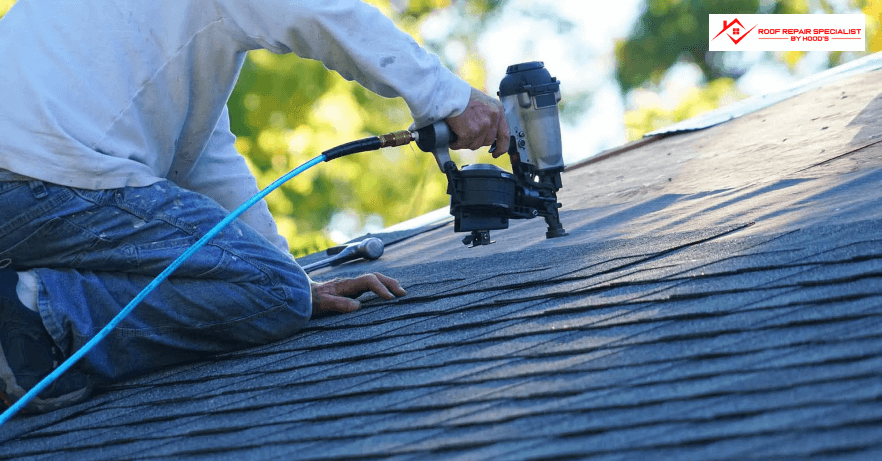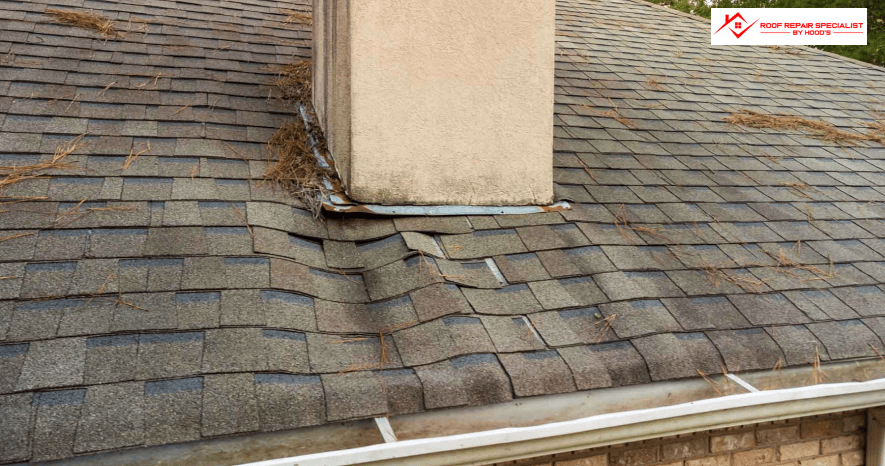Introduction:
Many homeowners overlook the condition of their roofs, especially when everything inside seems dry and secure. This oversight can lead to the unnoticed development of soft spots, primarily caused by moisture, which can significantly compromise the roof’s stability and safety over time.
Regular inspections by roof repair professionals are essential to prevent these issues from escalating. Detecting soft spots early and taking immediate action is crucial to maintain the roof’s strength and avoid further complications.
This guide will explore how to detect, prevent, and repair soft spots on your roof, providing you with the knowledge needed to protect your home effectively.
Understand What Causes Roof Soft Spots
Soft spots on your roof can signal significant structural concerns that need urgent attention. These weakened areas develop when the underlying layer of your roof absorbs moisture.
For example, while shingles often last for many years, the plywood underneath might deteriorate if there are gaps between them. This plywood is vulnerable to weather conditions like intense heat, humidity, heavy rain, snow, and ongoing dampness, which can lead to softening and sagging.
You might find these soft spots anywhere on the roof, usually appearing in clusters. They’re particularly noticeable in the spring, as the rising temperatures cause roofing materials to expand, making any dips and irregularities evident.
If you notice unusual textures or sagging spots on your roof or if the attic reveals any sagging, you must act quickly by contacting roofing professionals. Certified roofing contractors will thoroughly evaluate your roof to determine the cause of the soft spots. Depending on the extent of the damage, their recommendations might range from patching the affected areas to replacing entire sections. Addressing these issues promptly ensures your roof remains strong and secure for the long term.
Common Causes of Soft Spot on Roof
Roof soft spots are a significant concern and can be attributed to several key factors. Understanding these causes can help in preventing and addressing them effectively:
Water Damage
The most frequent culprit behind roof issues is water damage. This often occurs after storms when leaks develop, allowing moisture to infiltrate the roofing system. Over time, this persistent moisture can break down the roofing materials, especially in poor water pools or drainage.
Aging Roof Materials
Roofs face a constant barrage from the elements—sunlight’s UV rays, rain, and snow all contribute to the gradual degradation of roofing materials. As materials like shingles, tiles, or metal age, they lose their resilience and become more prone to cracking, warping, and other forms of wear. This deterioration reduces their ability to protect the underlying layers, making the roof susceptible to soft spots.
Substandard Workmanship
Incorrect installation or inadequate repair jobs can create weak points on your roof. These areas may not be immediately obvious but can develop into soft spots as they are less equipped to handle environmental stresses. Ensuring that a qualified roofing company in Knoxville does all roofing work with a track record of quality craftsmanship is crucial to avoid these issues.
Moisture from Poor Ventilation
Proper attic ventilation is essential for maintaining a healthy roof. Without adequate airflow, moisture can accumulate, leading to damp insulation and other problems, including mold and mildew. Over time, this trapped moisture can soften the roof structure beneath, creating soft spots.
Want to Protect Your Roof from Soft Spots?
Contact Roof Repair Specialist today to schedule an inspection and keep your roof in top condition!
Strategies for Identifying Soft Spots on Your Roof
Pinpointing soft spots is crucial to ensure your roof’s health and longevity. Here are varied and comprehensive methods to detect these problem areas, starting with basic inspections and advancing to more technical approaches:
Start with a Detailed Visual Check
Initiate the process with a visual inspection, both inside and outside:
- Inside your home, examine the ceiling and any attic areas you can reach for indicators like mold, water stains, or paint that’s starting to bubble or peel.
- On the roof, wear protective gear for safety and look for shingles that have changed color or seem unusually dark, which can suggest moisture problems.
Remember, some issues may be hidden from view, making visual inspections a starting point rather than a comprehensive solution.
Use Moisture Meters for Precision
For a more scientific approach, use moisture meters to detect hidden dampness within the roofing materials:
- Target zones with peculiar moisture levels, as these spots often signal underlying water penetration.
- Take several readings in these areas to map out the severity and reach of the damage.
Operating moisture meters requires some technical know-how and might be challenging for those who are not familiar with such tools.
Engage Expert Roofers for a Professional Assessment
Nothing compares to the thorough evaluation conducted by professional roofers. Their expertise and specialized equipment lead to accurate diagnoses:
- They can delineate the full scope of soft spots, uncovering both causes and solutions.
- Professional roofers can guide you through repair options and preventive measures, ensuring your roof remains in top condition.
- Their careful approach prevents additional harm during the inspection.
While DIY efforts can seem economical, they often overlook deeper, more serious issues. The best course of action is to consult professional roofing contractors for reliable detection and remedy of roof soft spots.
How to Repair Soft Spot on Roof?

Soft spots on your roof don’t always necessitate a complete roof replacement. A thorough evaluation by an experienced roofer is essential to determine the overall condition of your roof and the best course of action.
There are primarily two approaches adopted by professionals for addressing soft spot.
Patching Minor Damage:
This approach is generally used for smaller areas of damage, typically less than one square foot. The process involves:
- Removing the existing roof covering will expose the affected area.
- Taking out the damaged decking and replacing it with new, sturdy material.
- Installing fresh underlayment over the new decking.
- Laying down new shingles to seamlessly integrate with the existing roof.
Patching is effective for localized damage and helps prevent minor issues from escalating into major concerns.
Replacing Large Sections:
If the damage is extensive or the soft spots are widespread, replacing entire roof sections might be necessary. This more comprehensive approach ensures that all weakened areas are addressed, thereby:
- Stripping the affected area down to the bare decking.
- Inspecting and replacing any compromised structural elements.
- Installing new underlayment and shingles across the entire section.
This method addresses current issues and reinforces the roof against potential future problems.
Additionally, proper ventilation is critical in both repair scenarios. A reliable roof repair company will assess the attic’s ventilation system during the repair process to ensure it adequately prevents condensation, regulates temperature, and halts the growth of mold and mildew. This step is vital for preventing the recurrence of soft spots and maintaining the roof’s overall health.
Why Soft Spots on Roofs Are a Cause for Concern
Soft spots on roofs are more than a minor inconvenience; they represent significant risks that can affect your home’s safety, efficiency, and health. Here’s why they should be promptly addressed:
Structural Instability
Soft spots are a clear indicator of potential structural problems. If left unaddressed, these areas can weaken, leading to a sagging or drooping roof. This structural compromise increases the risk of collapse, especially under heavy loads like snow or during severe storms. Water infiltration is often the culprit, gradually damaging wooden structures and degrading insulation, which reduces the roof’s overall support and stability.
Reduced Energy Efficiency
Water-damaged insulation due to soft spots leads to inefficiencies in your home’s heating and cooling system. In winter, compromised insulation allows heat to escape, while in summer, it lets external heat penetrate your living spaces. This makes your home less comfortable and increases energy costs as your heating and cooling systems work harder to maintain desired temperatures.
Risk of Mold and Mildew Growth
Moisture trapped in soft spots creates an ideal environment for mold and mildew. These fungi can cause various health issues, including respiratory problems, allergic reactions, and headaches. Additionally, water damage often remains hidden until significant symptoms like ceiling stains, cracked paint, and peeling wallpaper emerge, signaling deeper issues that need immediate attention.
Addressing soft spots on your roof as soon as they are detected is essential to prevent these issues and ensure your home remains safe and efficient. Regular inspections and maintenance are key to protecting your property and investment long-term.
Ensure a Secure Home with Knoxville Roof Repair Specialist
Homeowners must proactively manage roof soft spots to maintain a secure and safe home environment. This involves prioritizing regular inspections, addressing repairs promptly, and seeking professional advice when unsure about the roof’s condition. This careful attention protects your investment, ensuring your roof stays beautiful and works well.
If you need a roof repaired, trust Roof Repair Specialist, a leader among Knoxville’s roofing contractors. Contact us today to arrange a free roof inspection and guarantee your roof’s enduring strength and durability.
